My Way with the Leica Digilux 2 (2022)
06th November 2022
Written and Illustrated
By
DAVID ASKHAM
Welcome to my retrospective review of the Leica Digilux 2 camera, or Leica D2, as it is commonly called. The camera is now firmly a part of Leica history. In digital terms, that is almost like reaching back to the Dark Ages, since the pace of technological progress has been staggering.
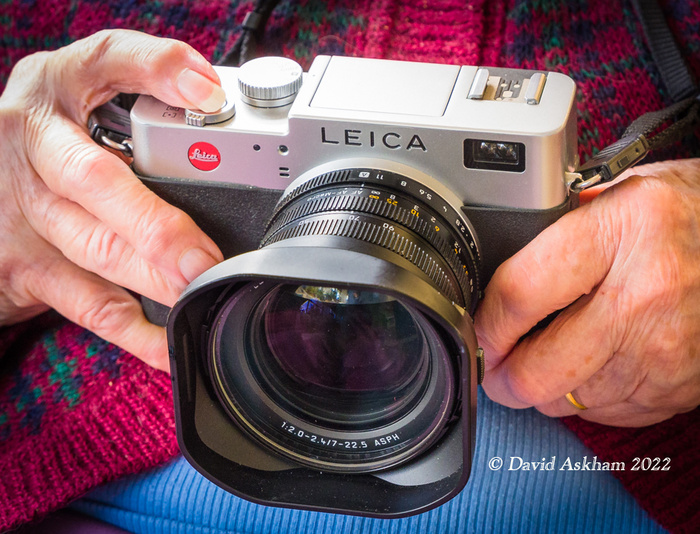
Maybe, you have just become the owner of an old Leica Digilux 2 camera, and are looking for answers, or help with its operation. Perhaps you received your Digilux 2 as a bequest from a senior relative’s estate. Or, equally likely, you have acquired a copy, more out of curiosity. You could be a collector and are interested in Leica’s serious entry into the digital age. Whatever the reason, I have updated my earlier views on the venerable Digilux 2 camera, and recounted my experiences with it, over the past 18 years.

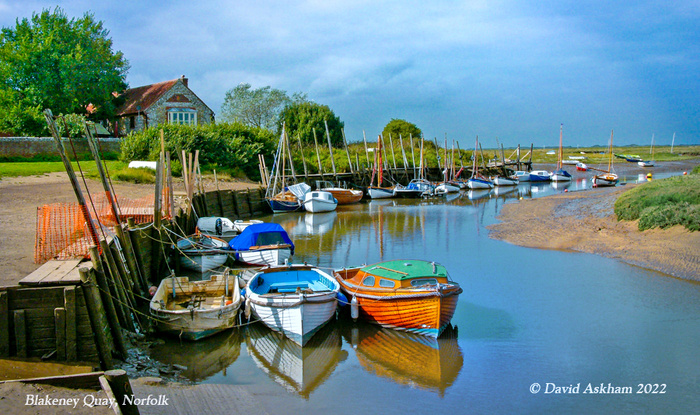
Background to this article
During Covid-19 lockdown, I spent many long hours re-editing my catalogue of digital images, mostly in the evenings. It served two purposes. I rediscovered long-forgotten events and associated pictures; and I gained fresh inspiration from reviewing my library pictures.

One session was devoted to searching for ‘winter’ pictures. After selecting my shortlist, I was surprised to find the oldest were made with my venerable Leica Digilux 2. I was astonished by their quality and relevance despite, at the time of shooting, not understanding the advantages of capturing files in RAW format, and the way to exploit that extra quality. It spawned an idea for another article which I wrote for Macfilos about thirty months ago. Macfilos. At the end of my Macfilos article, you will find some very interesting comments, from other users, young and old. I had always intended to add an amended version to my own website. So, here it is.
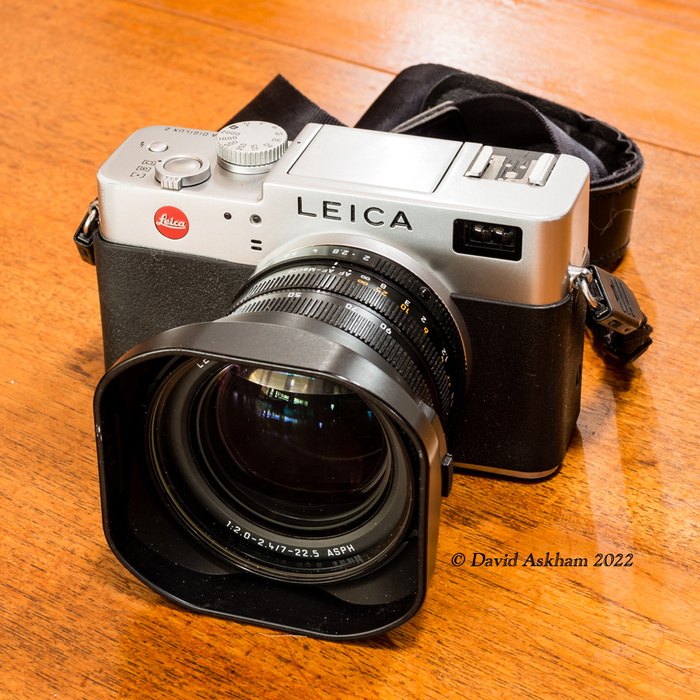
Specification
The Digilux 2 was a joint production with Panasonic who sold a near-identical version called Panasonic DMC-LC1. It has a metal body, rather box-like, with a very large lens. By today’s standards, its 5 megapixels sensor will seem woefully inadequate. But we are talking about the year 2004, eighteen years ago, which is a long time in digital development. Notwithstanding that reservation, the camera is still capable of producing beautiful images, with a quality not seen in modern cameras.
Another feature of interest is the use of analogue controls. It is an excellent tool for teaching aspiring photographers how to manage exposure, in various modes, such as Aperture and Shutter priority, and fully manual. With a full range of shutter speeds, up to 1/1000 second, and manual aperture setting, via a rotating ring on the lens, a student can quickly learn how to control exposure.
Although promoted and regarded by many as a point-and-shoot camera, it was very much more than that. It was used by professionals for press and illustrative work. In my case, it allowed me to meet changing editorial requirements, who were pressing for digital delivery, of words and pictures. Apart from the DMR (or Digital Module for Leica R 8/9 cameras), the Digilux 2 was as far upmarket as Leica went in those days. The M8 was still on the drawing board.

The outstanding feature of the Digilux 2 is its lens, designed by Leica, and an outstanding performer. I had never owned a lens in its class, so good. It is a real shame that it now languishes on an out-of-date body and sees relatively little use in the real world. In comparison, it is noteworthy that contemporary Leica R lenses have seen a rebirth as they enjoy being adapted for work on newer system bodies, such as the SL and CL. Not so with classic lenses permanently fixed to obsolete bodies. They quickly become museum pieces.
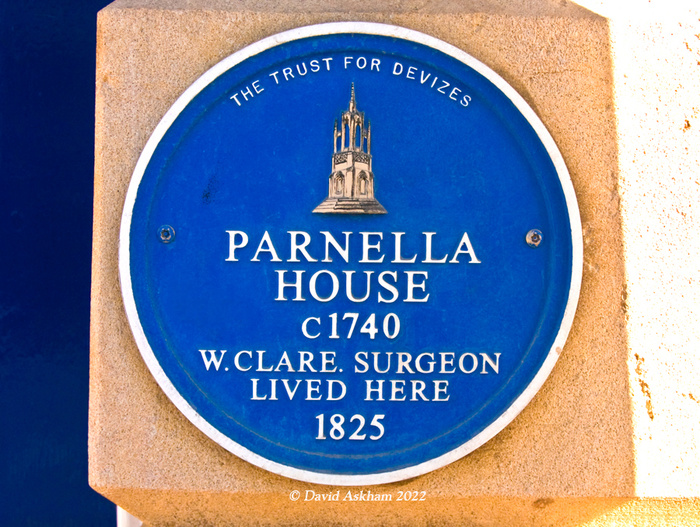
The Digilux 2 sports a 28-90 mm Vario-Summicron zoom lens with an almost constant starting aperture of f/2. (At the 90 mm zoom setting, the aperture closes slightly to f/2.4 — a very modest loss of light transmission). All of this was possible because the sensor was a tiny two-thirds inch CCD type, or about the size of a photographer’s little fingernail.
Unfortunately, the sensitivity of the sensor is rather limited, typical of the state of technology at that time. The base ISO is 100, with two additional settings of 200 and 400, unthinkable today, but typical of contemporary film speeds in 2003 when it was designed.
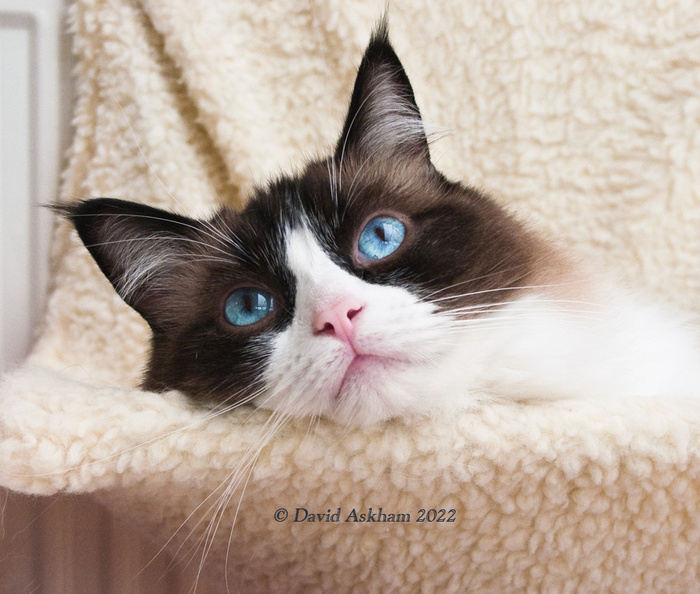
Performance at ISO 400 is quite noisy but, within reason, that is now controllable with modern software, such as Lightroom’s noise-reduction feature. However, one cannot hide the fact that the camera’s use in low-light is very limited, unless auxiliary sources are added, or time exposures are possible. I often used it in the latter way, in workshop interiors, and it was quite liberating with white balance so easily corrected when taking pictures, or later in post-processing. I could frequently work with available light, for more natural results; a great improvement over lugging portable studio electronic flash units!
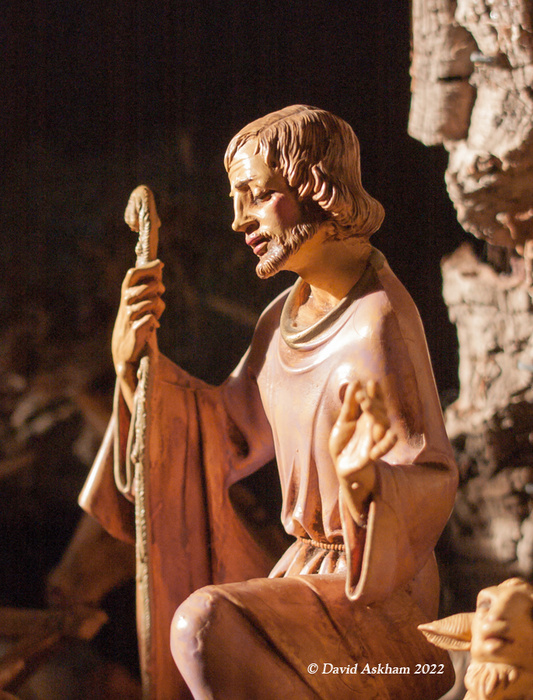
Accessories
I do have two original accessories: the black leather case with space for spare battery and memory card; and a Leica Elpro-D E69 close-up attachment for even closer shots of details on a workpiece. That enabled me to shoot close details of tools, and interesting grain of wood used in the making of fine furniture.
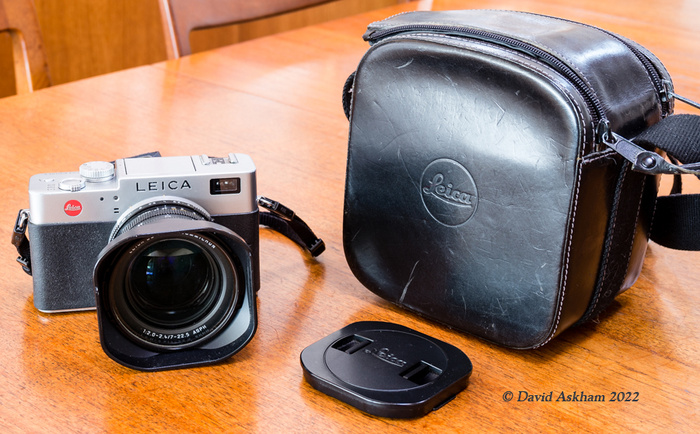

Applied photography
For about fifteen years I had been illustrating my freelance articles with colour transparencies, mainly in medium format, but gradually including Leica M6 material. By 2004 I had a varied portfolio of work of which one sector blossomed. I was profiling and portraying craftspeople and their workshops all over the country, one even in Australia where a sheep farmer was a nationally known woodturner. Within this body of work, I featured over two hundred workshops and witnessed the rapid emergence of digital media. Soon I was pressed by an editor to deliver my contributions digitally. Initially I was sceptical whether the quality was good enough. However, very soon film photography was eclipsed by editorial preferences for digital media.
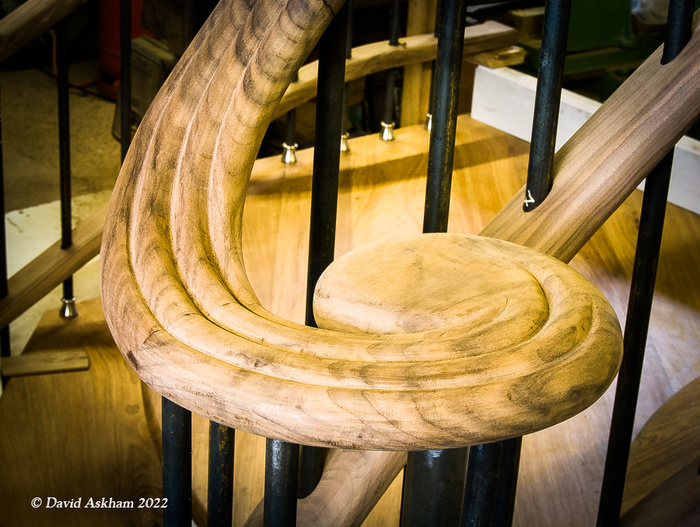
I surveyed the market, visited Focus on Imaging at the NEC in Birmingham and handled the new Leica Digilux 2 camera which had just been launched. Although the resolution was a little on the low side in comparison with other brands, I did like that lens. Soon after its launch, I had my own Digilux 2 together with its own leather case and UV filter to protect the lens in active workshops. Many of these places were very dusty, not ideal environments for changing camera lenses.
The changeover was daunting. I had to become competent in digital processing and quickly saw the need for some kind of DAM, (or Digital Asset Management). DAM is a fairly complex subject and, understandably avoided by many photographers. Suffice to say that after one or two false starts, I welcomed Adobe’s launch of Lightroom. It was clearly superior to earlier software and continued to evolve over time. It meets all of my current needs, both for DAM and processing. (If any readers would welcome an article on DAM, please request it in the Comments panel at the end of this article)
Performance
So the Digilux 2 quickly became the digital camera of choice for my illustrated articles, profiling a wide range of businesses in the mid-noughties. How did it perform?
Whereas with film cameras I carried portable studio lighting units into the workplace, I found, with care, that I could mostly cope using ambient lighting. That was very liberating and also yielded more natural photographs of my subjects. I found that I had finer control over colour fidelity and setting the white balance. Invariably I grew to depend on using a calibrated grey card to control unwanted colour contamination. Different coloured woods, for example, could be shown more accurately.
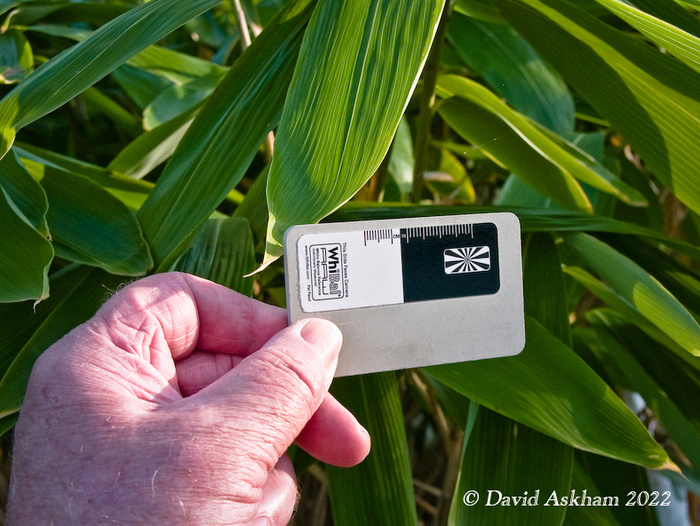
The Digilux 2 was mostly used on tripods indoors; a table version for worktops and a conventional tripod for more general views and portraits of people at work. Some subjects were specialist colleges and schools while others included musical instrument makers, boat-builders, a coracle-maker, archers, cabinetmakers, bow-makers, oarsmen, tree-houses, cathedral furniture, replica sports car makers, church organ-makers, a smoking pipe-maker, Romany caravan restorers and woodturners. These represent a few of the many craftspeople I profiled in the Nineties and Noughties. Each workshop was different and posed challenges when introducing photographic equipment.
Dust was a hazard to be avoided wherever possible. While some places were spotlessly clean with modern air filtration, others revealed the legacy of years of accumulated dust. It was a serious fire risk and naked flames were prohibited. In the latter cases, I always used a cloth to protect my camera and lenses between shots. My Digilux 2 stayed in its strong black leather case when I was interviewing my subjects.
I found this phase of my work most interesting and several of my subjects became business profiles for publication in The Times newspaper and professional trade media. My Digilux 2 played a significant role when digital delivery was needed for my copy and pictures.
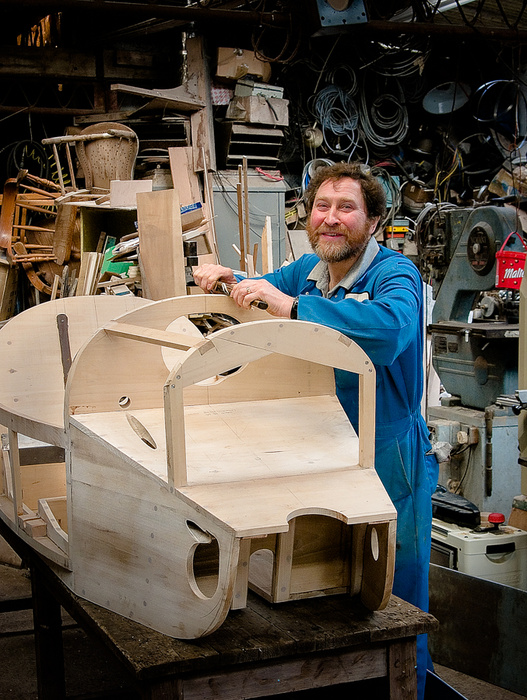
Personal portraiture
The Digilux 2 proved equally capable when I needed a camera for family pictures. Apart from informal portraits, it was the camera of choice when persuaded to photograph my nephew’s wedding. In church, its silent operation enabled me to shoot from quite close to the bride and groom.
[A Wedding picture to be added]
I rarely use flash, nowadays. However, the Digilux 2 has a most ingenious inbuilt pop-up flash which I used to advantage when ambient light indoors was borderline. What is special about its flash is the ability to select a halfway position, which gives a brief burst at 45 degrees tilt, very useful for bouncing light. With a make-shift reflector, the shady side of window light can be softened in a convincing way.

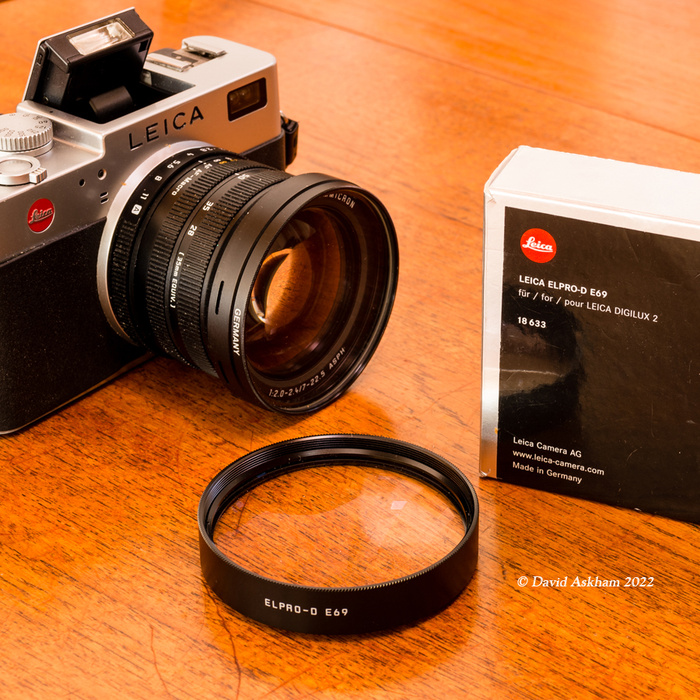
My way with the Digilux 2
Now I will add a few helpful hints for getting the best results from your D2.
1. ISO setting. Forget early advice to avoid using higher ISO settings. Modern processing software can easily improve results taken with ISO 200 or 400, by reducing Luminance noise. You might need to tweak sharpening, just a little, but grittiness can be eliminated.
2. EVF (Electronic Viewfinder). uses very outdated technology. However, it can be used, effectively, for framing an image, which is all most users require. It also works reasonably well with manual focusing, especially with in-built viewfinder magnification.
3. Resolution. There is no denying 5 megapixels is woefully low by modern standards. Yet, for most users ,who circulate their images in social media or dedicated websites, 5 megapixels is adequate. My Digilux 2 pictures have been used on A4 magazine covers and calendars. Part of one of my Digilux 2 pictures was used for many weeks in a full-page advertisement. I doubt if anyone looked at its metadata. So, do not be deterred by low resolution, but I would no longer used it for critical work today.
4. RAW versus JPEG. For most of my photographic work, I choose to record my images in RAW format. However, many users have found Digilux 2 JPEG files meet their needs. In the beginning of ownership, I also saved in JPEG format, largely because I did not understand how to process RAW. Therefore, most of my older pictures are JPEGs. Accordingly, and exceptionally, I have an open mind when considering Digilux 2 files. The camera is no longer used for serious photography.
Is the Digilux 2 still worth buying today?
I have often been asked this question, by people worldwide. My advice varies and has naturally become more cautious over time. I will try and crystallise my thoughts, as follows.
In terms of specification? Probably not. In terms of helping a young person learn about photography? Possibly. Its analogue controls help a beginner to appreciate the factors influencing how to take a successful picture. For a nostalgic experience with early Leica digital cameras? Certainly. For those at peace with a slower pace of life, yet who resist dabbling with cut-film in technical cameras and mixing chemical brews? Possibly. For those who believe what others claim, i.e. that the Digilux 2 produces photographs with a distinctive look? Many users think so. See this thread which currently has 3,200 contributions from users and inquirers worldwide. https://www.l-camera-forum.com/topic/20016-do-digilux-2-photos-have-distinctive-look/
What is not in doubt is the enduring performance of the earliest Leica digital cameras, epitomised by the Digilux 1, 2, X1, X2 and X Vario. They are still fully capable of taking impressive photos, fully up to the standard established when first launched up to sixteen years ago. That is pretty good for modern electronic devices. However, the continued supply of old electronic components is the major problem. At the right price (this will vary as time passes), it might be worth a gamble. Leica no longer maintains spares for these obsolete digital cameras. That is why serious owners possess one or more spare bodies in case cannibalisation becomes necessary. But let us not dwell on the negatives.
My Digilux 2 could certainly do with a new coat (or ‘skin’). But I like it as it is. It looks like and handles like many classic Leica cameras. That is a joy in itself and a good enough reason to own one. (For those tempted by replacing the original skin with fine leather, in a range of smart colours, here is a link to a supplier of material. https://www.cameraleather.com/supported.html
In conclusion, owners of a Digilux 2 can enjoy a nostalgic experience today, and be proud of the pictures it is capable of producing. Further Digilux 2 pictures can be seen here https://www.davidaskham.com/leica-digilux-2
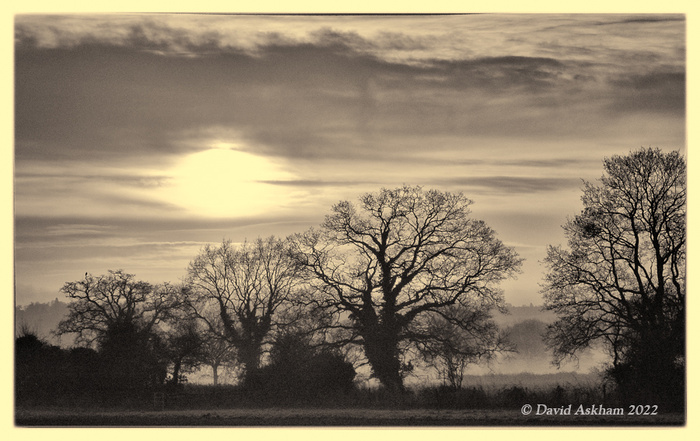
By
DAVID ASKHAM
Welcome to my retrospective review of the Leica Digilux 2 camera, or Leica D2, as it is commonly called. The camera is now firmly a part of Leica history. In digital terms, that is almost like reaching back to the Dark Ages, since the pace of technological progress has been staggering.

Maybe, you have just become the owner of an old Leica Digilux 2 camera, and are looking for answers, or help with its operation. Perhaps you received your Digilux 2 as a bequest from a senior relative’s estate. Or, equally likely, you have acquired a copy, more out of curiosity. You could be a collector and are interested in Leica’s serious entry into the digital age. Whatever the reason, I have updated my earlier views on the venerable Digilux 2 camera, and recounted my experiences with it, over the past 18 years.


(Blakeney Quay Norfolk UK)
Background to this article
During Covid-19 lockdown, I spent many long hours re-editing my catalogue of digital images, mostly in the evenings. It served two purposes. I rediscovered long-forgotten events and associated pictures; and I gained fresh inspiration from reviewing my library pictures.

(FROZEN LEAVES Digilux 2 ISO 100 1/500 sec f/2.4 2005)
One session was devoted to searching for ‘winter’ pictures. After selecting my shortlist, I was surprised to find the oldest were made with my venerable Leica Digilux 2. I was astonished by their quality and relevance despite, at the time of shooting, not understanding the advantages of capturing files in RAW format, and the way to exploit that extra quality. It spawned an idea for another article which I wrote for Macfilos about thirty months ago. Macfilos. At the end of my Macfilos article, you will find some very interesting comments, from other users, young and old. I had always intended to add an amended version to my own website. So, here it is.

(Leica Digilux 2 ready for use).
Specification
The Digilux 2 was a joint production with Panasonic who sold a near-identical version called Panasonic DMC-LC1. It has a metal body, rather box-like, with a very large lens. By today’s standards, its 5 megapixels sensor will seem woefully inadequate. But we are talking about the year 2004, eighteen years ago, which is a long time in digital development. Notwithstanding that reservation, the camera is still capable of producing beautiful images, with a quality not seen in modern cameras.
Another feature of interest is the use of analogue controls. It is an excellent tool for teaching aspiring photographers how to manage exposure, in various modes, such as Aperture and Shutter priority, and fully manual. With a full range of shutter speeds, up to 1/1000 second, and manual aperture setting, via a rotating ring on the lens, a student can quickly learn how to control exposure.
Although promoted and regarded by many as a point-and-shoot camera, it was very much more than that. It was used by professionals for press and illustrative work. In my case, it allowed me to meet changing editorial requirements, who were pressing for digital delivery, of words and pictures. Apart from the DMR (or Digital Module for Leica R 8/9 cameras), the Digilux 2 was as far upmarket as Leica went in those days. The M8 was still on the drawing board.

(Rear view of Digilux 2 with memory card door open) (Picture taken with Leica X-Vario)
The outstanding feature of the Digilux 2 is its lens, designed by Leica, and an outstanding performer. I had never owned a lens in its class, so good. It is a real shame that it now languishes on an out-of-date body and sees relatively little use in the real world. In comparison, it is noteworthy that contemporary Leica R lenses have seen a rebirth as they enjoy being adapted for work on newer system bodies, such as the SL and CL. Not so with classic lenses permanently fixed to obsolete bodies. They quickly become museum pieces.

(Digilux 2 1/200 sec at f/4.8, ISO 100)
The Digilux 2 sports a 28-90 mm Vario-Summicron zoom lens with an almost constant starting aperture of f/2. (At the 90 mm zoom setting, the aperture closes slightly to f/2.4 — a very modest loss of light transmission). All of this was possible because the sensor was a tiny two-thirds inch CCD type, or about the size of a photographer’s little fingernail.
Unfortunately, the sensitivity of the sensor is rather limited, typical of the state of technology at that time. The base ISO is 100, with two additional settings of 200 and 400, unthinkable today, but typical of contemporary film speeds in 2003 when it was designed.

(ISO 200 was used to take this daylight indoors portrait of a pet cat in a warm place)
Performance at ISO 400 is quite noisy but, within reason, that is now controllable with modern software, such as Lightroom’s noise-reduction feature. However, one cannot hide the fact that the camera’s use in low-light is very limited, unless auxiliary sources are added, or time exposures are possible. I often used it in the latter way, in workshop interiors, and it was quite liberating with white balance so easily corrected when taking pictures, or later in post-processing. I could frequently work with available light, for more natural results; a great improvement over lugging portable studio electronic flash units!

(Neapolitan nativity shepherd is a feature of celebrating Christmas in Naples) (Digilux 2 at ISO 400)
Accessories
I do have two original accessories: the black leather case with space for spare battery and memory card; and a Leica Elpro-D E69 close-up attachment for even closer shots of details on a workpiece. That enabled me to shoot close details of tools, and interesting grain of wood used in the making of fine furniture.

(Black custom leather case for the Digilux 2 (taken with the Leica X-Vario))

(A plate of freshly-picked plums, taken using the Elpro-D close-up lens)
Applied photography
For about fifteen years I had been illustrating my freelance articles with colour transparencies, mainly in medium format, but gradually including Leica M6 material. By 2004 I had a varied portfolio of work of which one sector blossomed. I was profiling and portraying craftspeople and their workshops all over the country, one even in Australia where a sheep farmer was a nationally known woodturner. Within this body of work, I featured over two hundred workshops and witnessed the rapid emergence of digital media. Soon I was pressed by an editor to deliver my contributions digitally. Initially I was sceptical whether the quality was good enough. However, very soon film photography was eclipsed by editorial preferences for digital media.

(Detail of ornamental staircase in a workshop in UK)
I surveyed the market, visited Focus on Imaging at the NEC in Birmingham and handled the new Leica Digilux 2 camera which had just been launched. Although the resolution was a little on the low side in comparison with other brands, I did like that lens. Soon after its launch, I had my own Digilux 2 together with its own leather case and UV filter to protect the lens in active workshops. Many of these places were very dusty, not ideal environments for changing camera lenses.
The changeover was daunting. I had to become competent in digital processing and quickly saw the need for some kind of DAM, (or Digital Asset Management). DAM is a fairly complex subject and, understandably avoided by many photographers. Suffice to say that after one or two false starts, I welcomed Adobe’s launch of Lightroom. It was clearly superior to earlier software and continued to evolve over time. It meets all of my current needs, both for DAM and processing. (If any readers would welcome an article on DAM, please request it in the Comments panel at the end of this article)
Performance
So the Digilux 2 quickly became the digital camera of choice for my illustrated articles, profiling a wide range of businesses in the mid-noughties. How did it perform?
Whereas with film cameras I carried portable studio lighting units into the workplace, I found, with care, that I could mostly cope using ambient lighting. That was very liberating and also yielded more natural photographs of my subjects. I found that I had finer control over colour fidelity and setting the white balance. Invariably I grew to depend on using a calibrated grey card to control unwanted colour contamination. Different coloured woods, for example, could be shown more accurately.

(A calibrated grey card is essential if you want accurate colour, devoid of contamination from adjacent sources or painted walls)
The Digilux 2 was mostly used on tripods indoors; a table version for worktops and a conventional tripod for more general views and portraits of people at work. Some subjects were specialist colleges and schools while others included musical instrument makers, boat-builders, a coracle-maker, archers, cabinetmakers, bow-makers, oarsmen, tree-houses, cathedral furniture, replica sports car makers, church organ-makers, a smoking pipe-maker, Romany caravan restorers and woodturners. These represent a few of the many craftspeople I profiled in the Nineties and Noughties. Each workshop was different and posed challenges when introducing photographic equipment.
Dust was a hazard to be avoided wherever possible. While some places were spotlessly clean with modern air filtration, others revealed the legacy of years of accumulated dust. It was a serious fire risk and naked flames were prohibited. In the latter cases, I always used a cloth to protect my camera and lenses between shots. My Digilux 2 stayed in its strong black leather case when I was interviewing my subjects.
I found this phase of my work most interesting and several of my subjects became business profiles for publication in The Times newspaper and professional trade media. My Digilux 2 played a significant role when digital delivery was needed for my copy and pictures.

(In the workshop where a replica Morgan Aero sports car is being constructed) (Digilux 2 ISO 400 1/20 sec. @ F/4.0)
Personal portraiture
The Digilux 2 proved equally capable when I needed a camera for family pictures. Apart from informal portraits, it was the camera of choice when persuaded to photograph my nephew’s wedding. In church, its silent operation enabled me to shoot from quite close to the bride and groom.
[A Wedding picture to be added]
I rarely use flash, nowadays. However, the Digilux 2 has a most ingenious inbuilt pop-up flash which I used to advantage when ambient light indoors was borderline. What is special about its flash is the ability to select a halfway position, which gives a brief burst at 45 degrees tilt, very useful for bouncing light. With a make-shift reflector, the shady side of window light can be softened in a convincing way.

(A casual portrait in a dark interior, using 45° bounce flash off an out-of-frame door on the right side)

(Note the raised camera flash unit set to 45° in order to bounce flash, a technique used in producing the above portrait)
My way with the Digilux 2
Now I will add a few helpful hints for getting the best results from your D2.
1. ISO setting. Forget early advice to avoid using higher ISO settings. Modern processing software can easily improve results taken with ISO 200 or 400, by reducing Luminance noise. You might need to tweak sharpening, just a little, but grittiness can be eliminated.
2. EVF (Electronic Viewfinder). uses very outdated technology. However, it can be used, effectively, for framing an image, which is all most users require. It also works reasonably well with manual focusing, especially with in-built viewfinder magnification.
3. Resolution. There is no denying 5 megapixels is woefully low by modern standards. Yet, for most users ,who circulate their images in social media or dedicated websites, 5 megapixels is adequate. My Digilux 2 pictures have been used on A4 magazine covers and calendars. Part of one of my Digilux 2 pictures was used for many weeks in a full-page advertisement. I doubt if anyone looked at its metadata. So, do not be deterred by low resolution, but I would no longer used it for critical work today.
4. RAW versus JPEG. For most of my photographic work, I choose to record my images in RAW format. However, many users have found Digilux 2 JPEG files meet their needs. In the beginning of ownership, I also saved in JPEG format, largely because I did not understand how to process RAW. Therefore, most of my older pictures are JPEGs. Accordingly, and exceptionally, I have an open mind when considering Digilux 2 files. The camera is no longer used for serious photography.
Is the Digilux 2 still worth buying today?
I have often been asked this question, by people worldwide. My advice varies and has naturally become more cautious over time. I will try and crystallise my thoughts, as follows.
In terms of specification? Probably not. In terms of helping a young person learn about photography? Possibly. Its analogue controls help a beginner to appreciate the factors influencing how to take a successful picture. For a nostalgic experience with early Leica digital cameras? Certainly. For those at peace with a slower pace of life, yet who resist dabbling with cut-film in technical cameras and mixing chemical brews? Possibly. For those who believe what others claim, i.e. that the Digilux 2 produces photographs with a distinctive look? Many users think so. See this thread which currently has 3,200 contributions from users and inquirers worldwide. https://www.l-camera-forum.com/topic/20016-do-digilux-2-photos-have-distinctive-look/
What is not in doubt is the enduring performance of the earliest Leica digital cameras, epitomised by the Digilux 1, 2, X1, X2 and X Vario. They are still fully capable of taking impressive photos, fully up to the standard established when first launched up to sixteen years ago. That is pretty good for modern electronic devices. However, the continued supply of old electronic components is the major problem. At the right price (this will vary as time passes), it might be worth a gamble. Leica no longer maintains spares for these obsolete digital cameras. That is why serious owners possess one or more spare bodies in case cannibalisation becomes necessary. But let us not dwell on the negatives.
My Digilux 2 could certainly do with a new coat (or ‘skin’). But I like it as it is. It looks like and handles like many classic Leica cameras. That is a joy in itself and a good enough reason to own one. (For those tempted by replacing the original skin with fine leather, in a range of smart colours, here is a link to a supplier of material. https://www.cameraleather.com/supported.html
In conclusion, owners of a Digilux 2 can enjoy a nostalgic experience today, and be proud of the pictures it is capable of producing. Further Digilux 2 pictures can be seen here https://www.davidaskham.com/leica-digilux-2

(Winter tree line) (Digilux 2 ISO 200, 1/640 at F/5)
Comments
 By pamela lewis: Beautiful pictures David.
By pamela lewis: Beautiful pictures David. By David Askham: Glad you enjoyed them, Pam
By David Askham: Glad you enjoyed them, Pam By Graham (G4FUJ: Read the article before your update. WAs in agreement then, still am now! An A4 sized print is easily achievable (I have added one or two to the large print circle pf the Leica Society). My first Digital Leica purchased somewhere around 2012 - mainly because of its traditional "analogue" type controls. But I fell under its spell. Just hope it will last another 10 years!
By Graham (G4FUJ: Read the article before your update. WAs in agreement then, still am now! An A4 sized print is easily achievable (I have added one or two to the large print circle pf the Leica Society). My first Digital Leica purchased somewhere around 2012 - mainly because of its traditional "analogue" type controls. But I fell under its spell. Just hope it will last another 10 years! By David Askham: Thank you Graham. I know from your many postings how loyal you are to the marque and the equipment you use and enjoy. Long may it continue to serve us!
By David Askham: Thank you Graham. I know from your many postings how loyal you are to the marque and the equipment you use and enjoy. Long may it continue to serve us! By Mark Adelman: David, I always keep my browser "Edge" @ 125% zoom and it naturally perfectly cropped your first pic of Blakeney Quay Norfolk UK down to just the 2 1\2 boats as I scrolled down the page, I was mesmerized by that pic in its cropped form on my screen and scrolling back up to see the full image. Reminiscent of my darkroom days of cropping in my enlarger, just awesome! Your writing is equally as beautiful.
By Mark Adelman: David, I always keep my browser "Edge" @ 125% zoom and it naturally perfectly cropped your first pic of Blakeney Quay Norfolk UK down to just the 2 1\2 boats as I scrolled down the page, I was mesmerized by that pic in its cropped form on my screen and scrolling back up to see the full image. Reminiscent of my darkroom days of cropping in my enlarger, just awesome! Your writing is equally as beautiful. By David Askham: Thank you for you kind comment on my Blakeney Quay picture. You make an interesting point. I frequently see good alternative crops when viewing on screen.
A much older version of that Norfolk scene made several magazine A4 front covers, including The Field. In those days film was used as a medium. A good scene can usually work equally well in both upright and landscape formats. I appreciate your comment on my writing. I believe in careful revision before releasing copy for publication.
By David Askham: Thank you for you kind comment on my Blakeney Quay picture. You make an interesting point. I frequently see good alternative crops when viewing on screen.
A much older version of that Norfolk scene made several magazine A4 front covers, including The Field. In those days film was used as a medium. A good scene can usually work equally well in both upright and landscape formats. I appreciate your comment on my writing. I believe in careful revision before releasing copy for publication. By Huw Maddock: Blakeney Quay,
I was a house officer in Norwich in 1985 and used to escape there .
Nice little camera and great results.
Huw
By Huw Maddock: Blakeney Quay,
I was a house officer in Norwich in 1985 and used to escape there .
Nice little camera and great results.
Huw By David Askham: Thank you Huw for your kind words. I must Email you on another matter.
By David Askham: Thank you Huw for your kind words. I must Email you on another matter.